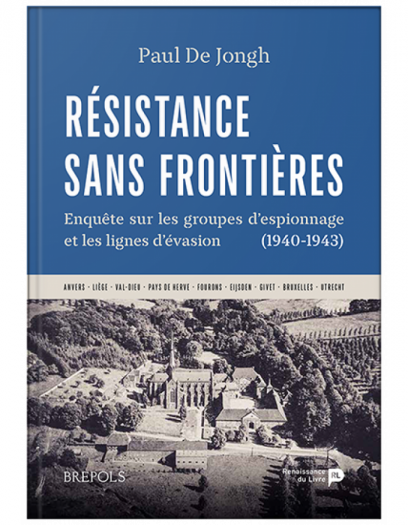Résistance sans frontières.
Enquête sur les groupes d'espionnage et les lignes d'évasion(1940-1943)

On 9 October 1943, nine members of the Belgian and Dutch resistance were shot in Rhijnauwen (near Utrecht). Among them were two monks of the Val-Dieu abbey, namely Hugo Jacobs from Antwerp and Stephanus Muhren from Bergen op Zoom.
With these two clergymen as protagonists, this book reconstructs in detail the story of spy-networks and the escape lines under occupation.
Escape lines were used by prisoners of war who had been able to escape, by Allied pilots whose plane had been downed, by Jews fleeing their homes and by Dutch people trying to get to the United Kingdom. The line ran from Germany and the Netherlands through Eijsden (NL) and through Voeren (B) and Visé (B). From the Herve region and Liège (B), the refugees were accompanied to Givet or Brussels, where other resistance groups took over.
The rise and expansion of resistance groups, the cooperation between Belgian and Dutch groups, the “Hannibal game” (this is the infiltration of resistance networks by the German Abwehr - the counter-espionage service - in Groningen and Liège) and the arrest and conviction of resistance fighters are all explained in detail. By trying to find out how clergymen from Antwerp and from Bergen op Zoom got involved in the resistance in the Liège border region, the book paints a more general picture of the Church and zooms in on the abbey with its German abbot, as well as on the background of the families involved.
Within the same family, we indeed have Father Hugo who paid with his life for joining the resistance and his brother who would be convicted for collaboration with the German occupier after the war.
Thanks to the biographical information available, enriched by letters sent from prison, we get to know the individual person behind the resistance fighter. This story addresses a number of issues characteristic of the early resistance movements: organizational problems, lack of funding, the problems of getting intelligence reports to London, personal tensions, etc.
A number of side-stories and –issues are also tackled in this book, such as the 18-days campaign with the Belgian army in Bruges and France, the fort of Aubin-Neufchâteau, the NSKK, the Abbeys of Mariënkroon and Val-Dieu, Kamp Haaren, the position of the Church, a radio station at Val Dieu and different resistance groups: Clarence, Luc-Marc, JAM-line, Boucle, Pierre Artéla, Bayard, Comet line and Groep Erkens.
Grenzeloos Verzet (‘Boundless Resistance’) is a unique case study of the resistance during the Second World War on both sides of the Belgian-Dutch border.